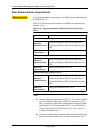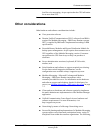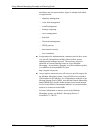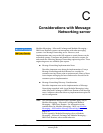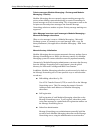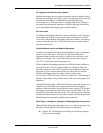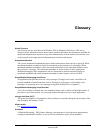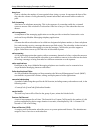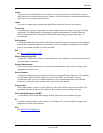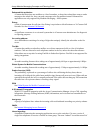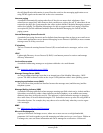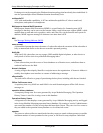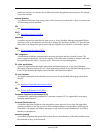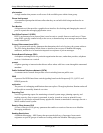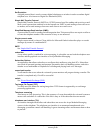
Avaya Modular Messaging Concepts and Planning Guide
GL-2 November 2004
Avaya Modular Messaging Concepts and
Planning Guide
busy hour
Used to calculate the number of ports required when sizing a system. It represents the hour of the
day when the volume of calls generated by internal subscribers and external callers reaches its
peak.
Call Answering
Also known as telephone answering. This is the sequence of events that enable the voicemail
system to answer calls on behalf of a subscriber if the line is busy or if the subscriber does not
answer.
call management
A component of the messaging application server that provides an interface between the voice
cards and Avaya Modular Messaging telephony applications.
Call Me
A feature that allows subscribers to be called at a designated telephone number, or from a telephone
list, each time they receive a message that meets specified criteria. The subscriber is then invited to
log onto Avaya Modular Messaging to review the message. Call Me also provides support to
pagers. Subscribers can set up Call Me rules in Subscriber Options.
call screening
A Call Answering option that requires callers to announce themselves before a subscriber answers
the call. If a call is screened and the subscriber is not available to answer it, the caller has the choice
of leaving a message or being forwarded to a different extension or to the operator.
caller applications
Extensions to the Avaya Modular Messaging telephone user interface used to customize how
Avaya Modular Messaging interacts with callers.
Caller Applications Editor
An Avaya Modular Messaging tool that customizes the Microsoft Management Console (MMC)
user interface to permit the creation, editing, and deployment of caller applications.
canonical addressing
A method of addressing that specifies the full location, including country code and area code, in the
following order:
+CountryCode [(AreaCode)] SubscriberNumber
carried traffic
The total busy hour traffic offered to the group of ports, minus the blocked calls.
Centum Call Second
A unit of measurement for call time. The formula for a Centum Call Second is the number of calls
per hour multiplied by their average duration in seconds, all multiplied by 100. A Centum Call
Second is 1/36
th
of an Erlang.
Class-of-Service (COS)
A category used to determine subscriber access to system options and features. The administrator
assigns a class-of-service to each subscriber.



